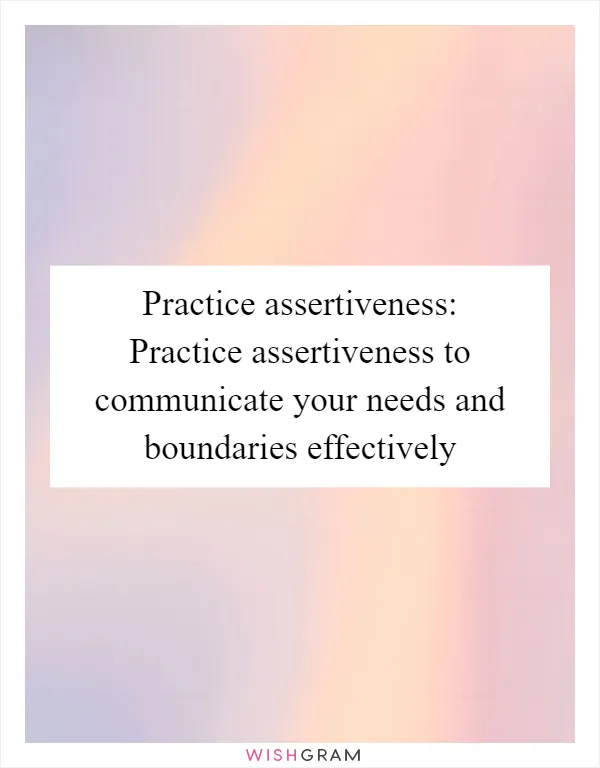Practice assertiveness: Practice assertiveness to communicate your needs and boundaries effectively
Practice assertiveness: Practice assertiveness to communicate your needs and boundaries effectively.
Assertiveness is an essential skill that allows you to express your thoughts, feelings, and needs in a clear and respectful manner. By practicing assertiveness, you can effectively communicate your boundaries and ensure that your needs are met. Here are some tips to help you develop and enhance your assertiveness skills.
Firstly, it's important to understand that assertiveness is not about being aggressive or confrontational. It's about expressing yourself confidently and respectfully, while also considering the feelings and perspectives of others. Start by recognizing your own needs and boundaries. Take some time to reflect on what is important to you and what you are comfortable with. This self-awareness will provide a solid foundation for assertive communication.
Next, practice expressing your needs and boundaries in a direct and clear manner. Use "I" statements to express how you feel or what you need, rather than blaming or criticizing others. For example, instead of saying, "You never listen to me," try saying, "I feel unheard when I don't get a chance to share my thoughts." This approach focuses on your own experience and encourages open dialogue.
Additionally, it's crucial to maintain a calm and composed demeanor when practicing assertiveness. Take deep breaths and speak in a steady tone to convey your message effectively. Avoid becoming defensive or aggressive, as this can hinder effective communication. Remember, assertiveness is about finding a balance between being respectful and standing up for yourself.
Active listening is another key aspect of assertiveness. When engaging in a conversation, make sure to give your full attention to the speaker. Show empathy and understanding by nodding, maintaining eye contact, and summarizing their points. This demonstrates that you value their perspective and encourages a more open and productive dialogue.
Furthermore, be prepared to negotiate and find compromises when necessary. Assertiveness is not about always getting your way, but rather finding mutually beneficial solutions. Be open to alternative viewpoints and be willing to find common ground. This collaborative approach fosters healthy relationships and effective communication.
Lastly, practice assertiveness in various situations to build your confidence. Start with low-stakes scenarios, such as expressing your preferences in a group setting or setting boundaries with a close friend. As you become more comfortable, gradually tackle more challenging situations, such as addressing conflicts or advocating for yourself in professional settings.
